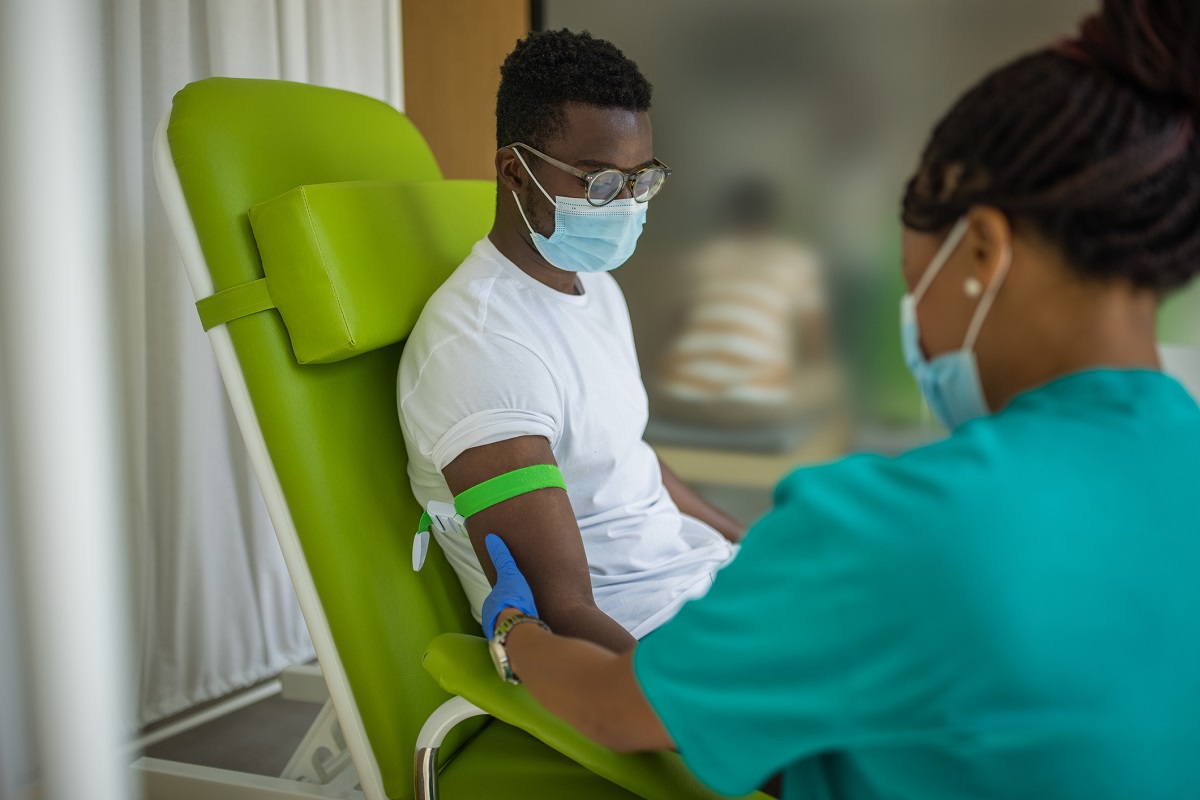The Medical Minute: Yes, the hospital needs your blood. And yes, it’s safe to give.

Right now, hospitals across the country need your blood.
To put a finer point on it, your friends and neighbors need your blood. At the moment, they have the greatest need for need type O, specifically.
Billboards and flyers often announce drives for local blood banks, but they don’t always give the clearest image of what’s happening.
You might picture a doctor working to save the life of an accident victim opening a fridge marked Type O and finding the shelves empty. But that’s not it, exactly, said Dr. Melissa George, director of Blood Bank/Transfusion Medicine and Apheresis at Penn State Health Milton S. Hershey Medical Center. A shortage of blood has far-reaching clinical implications, affecting scheduled surgeries and patients who depend on regular transfusions as treatment for illness.
How we got here is a story that involves COVID-19, of course, but in ways that are perhaps not obvious.
Below, George answers a few questions about giving blood. But two answers at the outset:
- Yes, giving blood is perfectly safe right now.
- Hospitals – including Penn State Health acute care centers – need your donation.
If you have Type O, step to the front of the line.
Hospitals are a little short on blood. What does that mean, exactly?
As of Wednesday, Jan. 5, the Milton S. Hershey Medical Center had enough fresh Type O blood for three days. That’s a little less than 50 percent of the supply they usually have on hand, George said. The hospital always keeps blood in reserve, especially a Level I trauma center like Hershey Medical Center, where some accident victims might require massive transfusions that could seriously erode supplies. Blood product inventory levels fluctuate daily.
What does that mean for patients?
When supplies get low, hospitals try to conserve.
They screen transfusion requests to determine whether they’re appropriate. They delay or cancel some, offer half-doses for stable patients or decrease the volume of blood products given in trauma packs.
“Such measures are not implemented lightly, as we aim to provide optimal care for all patients in need,” Geoge said.
When supplies of Type O are low, the situation is particularly dire.
Group O negative – found in 6.6% of people – “is the universal donor and can be given to a patient of any blood group in emergency situations when their blood group is unknown and test results will not be known before the critical transfusion is needed,” George said.
Group O patients, however, can receive only Group O red blood cells. And since it’s also the universal donor, Group O is always in highest demand.
If Group O supplies aren’t available, patients cannot safely undergo surgeries or other procedures, such as bone marrow transplants.
“Even more ominous,” George said, “a lack of Group O blood could have fatal consequences for a patient who sustained injuries in accident or trauma.”
How do I know my blood type?
Chances are, if you’re a first-time donor, you don’t. Testing for blood type isn’t a routine procedure. The most common way to find out is to donate. When you donate a unit of blood, your blood is typed and screened for antibodies. You would likely receive a notification from the blood donor center of your blood type, such as a wallet card in the mail soon after your donation.
How did we get here?
The pandemic played a role. However, people fearful to donate is less of a problem than a lack of places to donate. Nationally, fewer venues have been willing to host drives due to COVID-19 concerns, George said.
A host of other factors come into play. Nationally, staffing levels have plagued everything from schedulers to phlebotomists to processors. Delays in air transport through national carriers stymie deliveries. “As the omicron variant continues to spread, and more people contract COVID-19 and are unable to work for several days, these impacts are expected to continue,” George said.
Potential donors can help by scheduling a draw or working with their place of employment, worship or school to help organize a mobile blood drive, George said.
Really ― is it safe?
“Blood donation is very safe,” George said.
Medical professionals oversee blood drives and staff them with people well versed in regulations and suggests from agencies such as the Centers for Disease Control and Prevention. Staff must wear masks, and phlebotomists wear gloves and sanitize chairs and other surfaces between donors. Everyone practices social distancing.
And blood donors must be healthy. Someone with an illness is asked not to go to a donation site if they are not feeling well.
“Blood donation is safer than a trip to the supermarket,” George said.
How can I donate?
To donate blood, reach out to:
- American Red Cross
- Central PA Blood Bank (1-800-771-0059)
- Miller-Keystone Blood Center
Related content:
The Medical Minute is a weekly health news feature produced by Penn State Health. Articles feature the expertise of faculty, physicians and staff, and are designed to offer timely, relevant health information of interest to a broad audience.
If you're having trouble accessing this content, or would like it in another format, please email Penn State Health Marketing & Communications.
